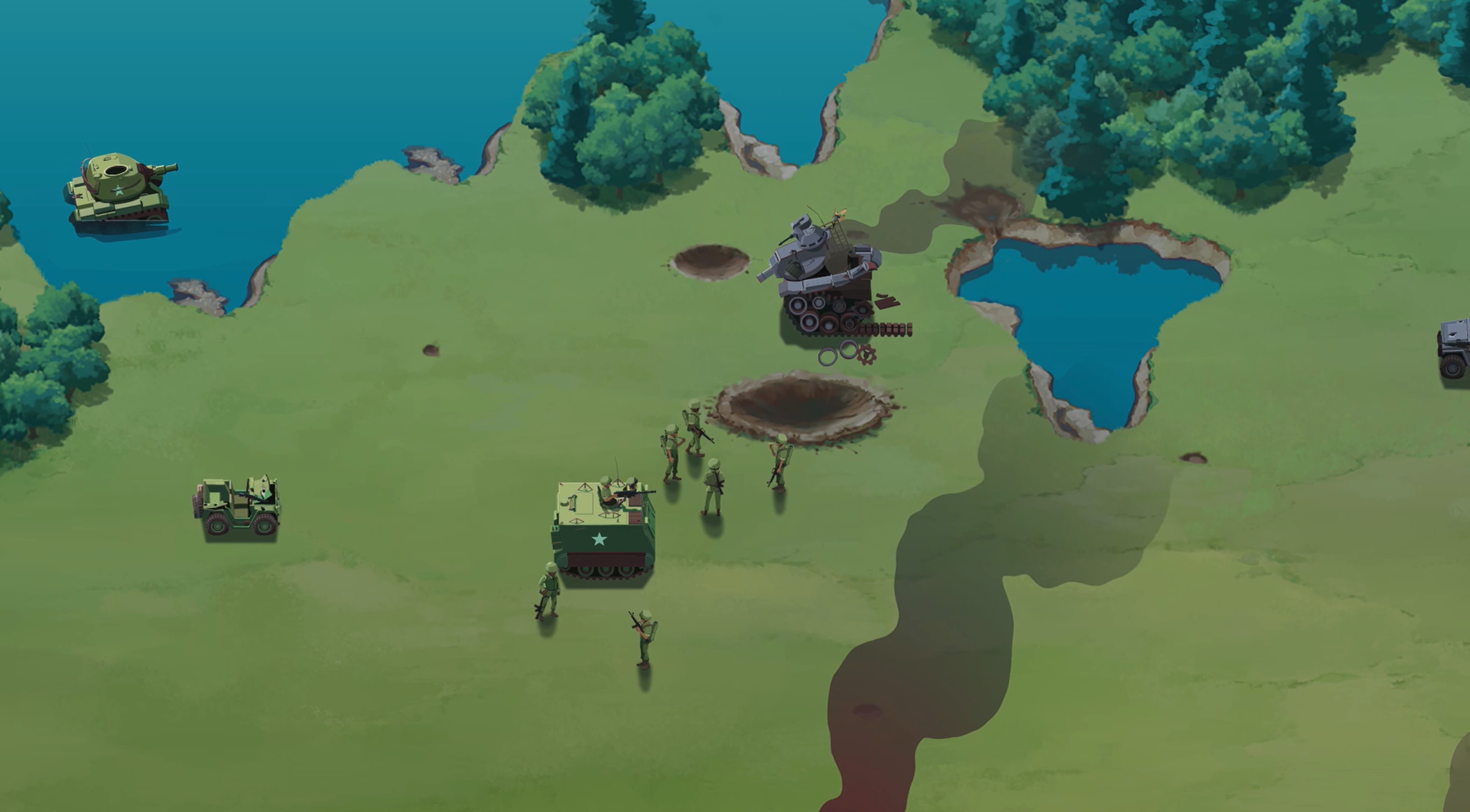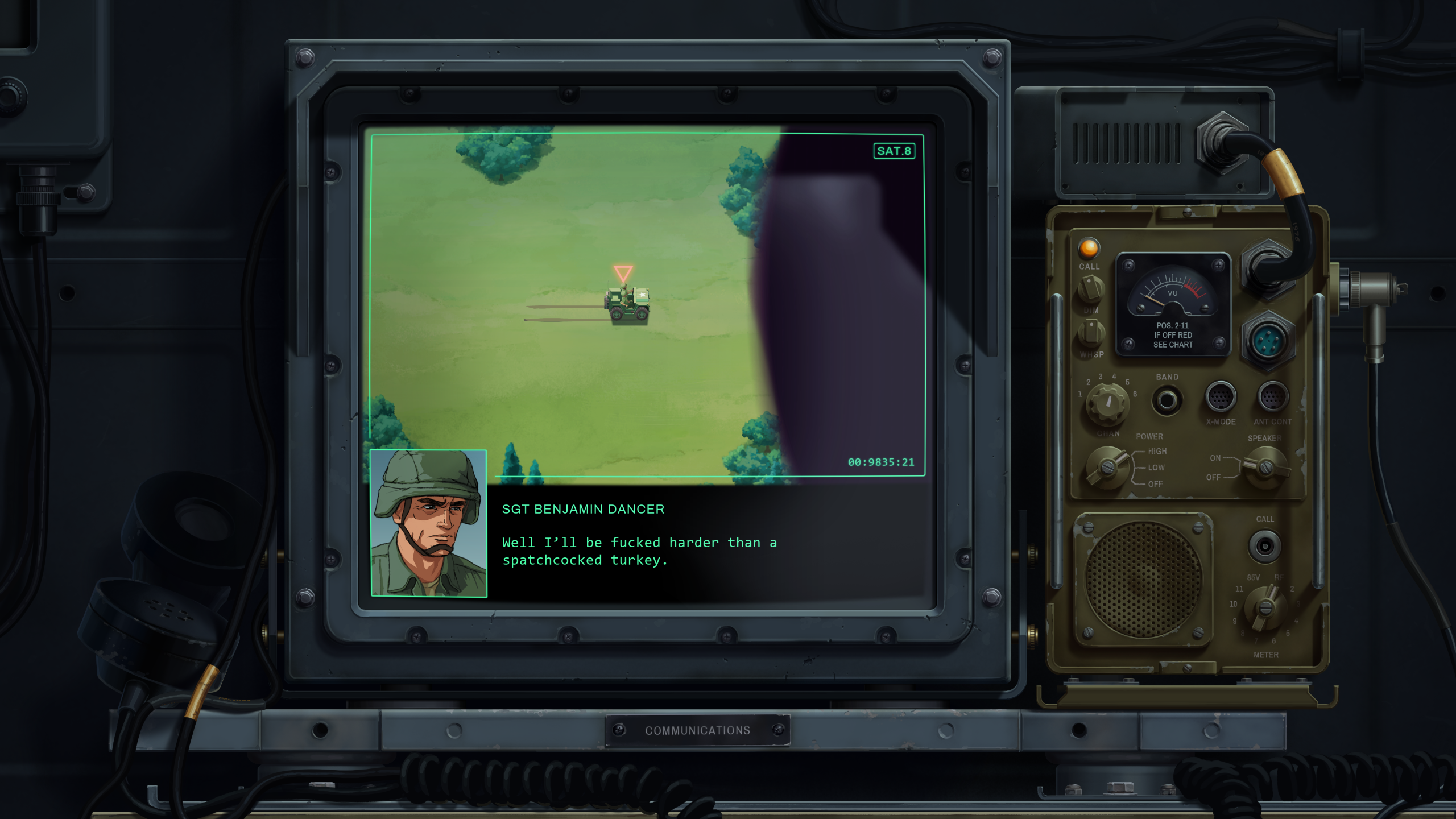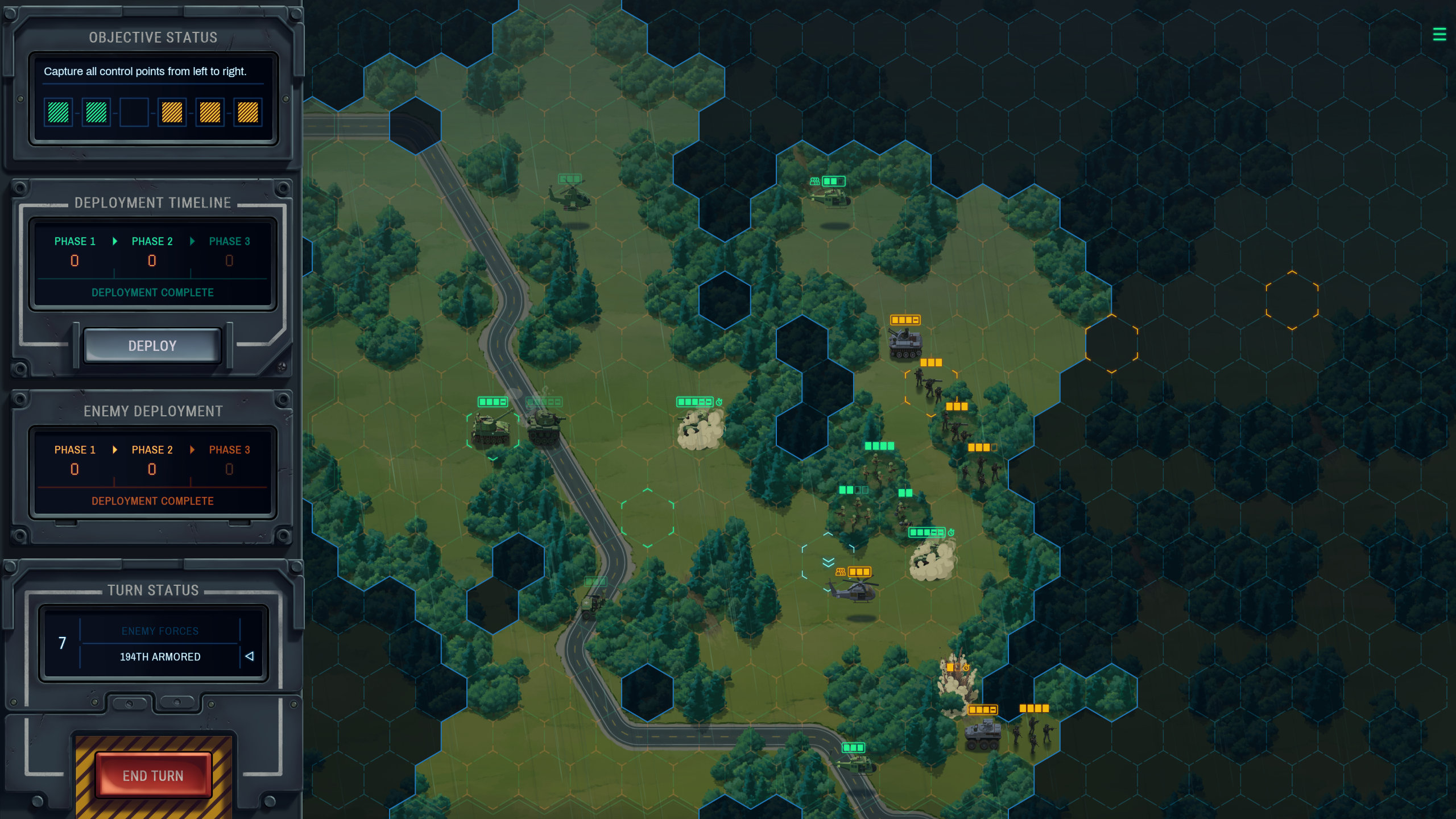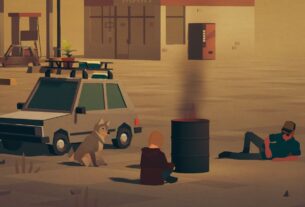
What is it? An indie spin on hex based wargaming
Expect to pay £15.49/$20
Developer Zachtronics
Publisher Zachtronics
Reviewed on Intel i5, 16gb RAM, Nvidia GTX 1660
Multiplayer? No
Link http://www.zachtronics.com/Möbius-front/
Developer Zachtronics is known for its intricate puzzle games, but in Möbius Front ’83 it’s served up something very different: a modernised take on the niche genre of hardcore hex-based wargames. Even more intriguingly, Möbius Front pits the United States against its most dastardly enemy yet: the United States. No, this isn’t a fifth column uprising but a sci-fi tale of the US being invaded by an alternate reality version of itself.
At least, that’s the elevator pitch. Unfortunately, Möbius Front takes its sweet time to engage with this novel premise, with hours passing before it even acknowledges that this alternate universe exists. The first thing you’ll notice is that the opening chapter is achingly slow, doling out miserly scraps of story in the form of an interrogation of an alt-USA prisoner, alongside fun banter between low level grunts with delightful names like Private Nathan Trucks and Sergeant Benjamin Dancer. Things get more interesting in subsequent chapters as more overt sci-fi elements are introduced, but that whole first chapter is several hours long, and I can imagine a lot of players are going to drop out before things get truly interesting.
Other between-mission activities involve cribbage solitaire with plane spotter cards, reading old Cold War-era military manuals (that are real pdfs you read outside the game) and a puzzle game based around signalling that’s a little closer to Zachtronics’ usual fare. None are especially deep distractions, and I only really dipped a toe into each one before pushing forward, hoping to progress the story.

It’s all just a light sprinkling of salt, then, over the meat of the tactical combat. Think of Möbius Front as an attempt to make a modernised, more mainstream version of niche hex-based wargames like Panzer Corps. So there’s no base building here, with units instead selected from a pool and deployed in waves of reinforcements. One mission might start you out with a small troop of infantry, who have to hold out long enough for a tank column to relieve them. Another might give you a big force up front, but no backup. It adds some much needed variety to battles, especially as the maps they take place on are near identical forests—at least until things get weirder in the later chapters. You might be fighting off enemies from a mirror universe, but you’re not fielding identical units. Your options are different, so the alt-USA will get to play with attack helicopters for several missions before you, for instance.
Let’s talk about those units. Fans of WW2 wargames might expect their tanks to be mobile fortresses, but Möbius Front is set in the ’80s, a period when the proliferation of anti-tank weaponry made armour far more vulnerable. Even the basic squad has a rocket launcher capable of taking out most vehicles in a single lucky shot, and you’ll soon learn just how quickly your tanks can go down when ambushed by some troops hiding out in the woods. By introducing a symmetrical conflict that the real ’80s never had, Möbius Front gently guides players down this realisation, and towards the power of cheap anti-tank weapons like the fearsome long range TOW Jeep or Dragon anti-tank guided missile. Eventually attack helicopters arrive on the scene and quickly establish themselves as the kings of the battlefield: fast, long ranged and capable of attacking tanks and infantry with equal ease, but vulnerable to dedicated anti-air units. Despite its streamlined approach, Möbius Front does a great job depicting the transition from WW2-style mass warfare to a more modern kind of war.
Tanks still have a use, not because of their toughness but because of their mobility. They can both shoot and move, which gives them a huge advantage. Units that can’t do this, which is most of them, risk accidentally revealing an enemy that shoots them to pieces before they get their own turn. In contrast, infantry are slow moving, short ranged and surprisingly durable, especially when they hide in a forest, meaning that only adjacent units can attack them. Some of my greatest victories came from high risk helicopter insertions, dropping an infantry squad off in hostile territory, forcing the enemy to take several turns clearing them out while a tank column desperately dashed forward to relieve them. Most missions involve capturing control points or destroying a specific objective, simply destroying the enemy force is never required, so mobility really is key.

What’s impressive is just how approachable all this is—everything I’ve described here is incredibly easy to grasp. There’s no complicated action points system, every unit can either shoot or move, and the most complicated thing is remembering the handful of vehicles that can do both. Almost everything you need to know is spelled out when you click on a unit, including which weapons need a turn to set up (usually powerful long range anti-tank weapons) and which vehicles can transport infantry squads (most of them, but your tank won’t be able to shoot while soldiers ride on top of it).
Zachtronics has managed to eliminate most of the potential lows, but Möbius Front also lacks many highs. There’s plenty of challenge, but no moments where you get to feel like you’ve outwitted a cunning enemy or made a desperate comeback. Most battles play out more or less as you’d expect. I can’t think of a single anecdote where a heroic unit won me the day, or a lucky shot that turned things around—the bread and butter of strategy games. The emphasis on grinding out wins, coupled with the generic and disposable nature of the units, makes missions feel interchangeable. Along with the sluggish pace, this makes for a game that can please, but never truly excites, eventually dampening the urge to plough through.
Read our review policy
Möbius Front ’83 makes a difficult genre easy to understand, but it lacks thrills.



